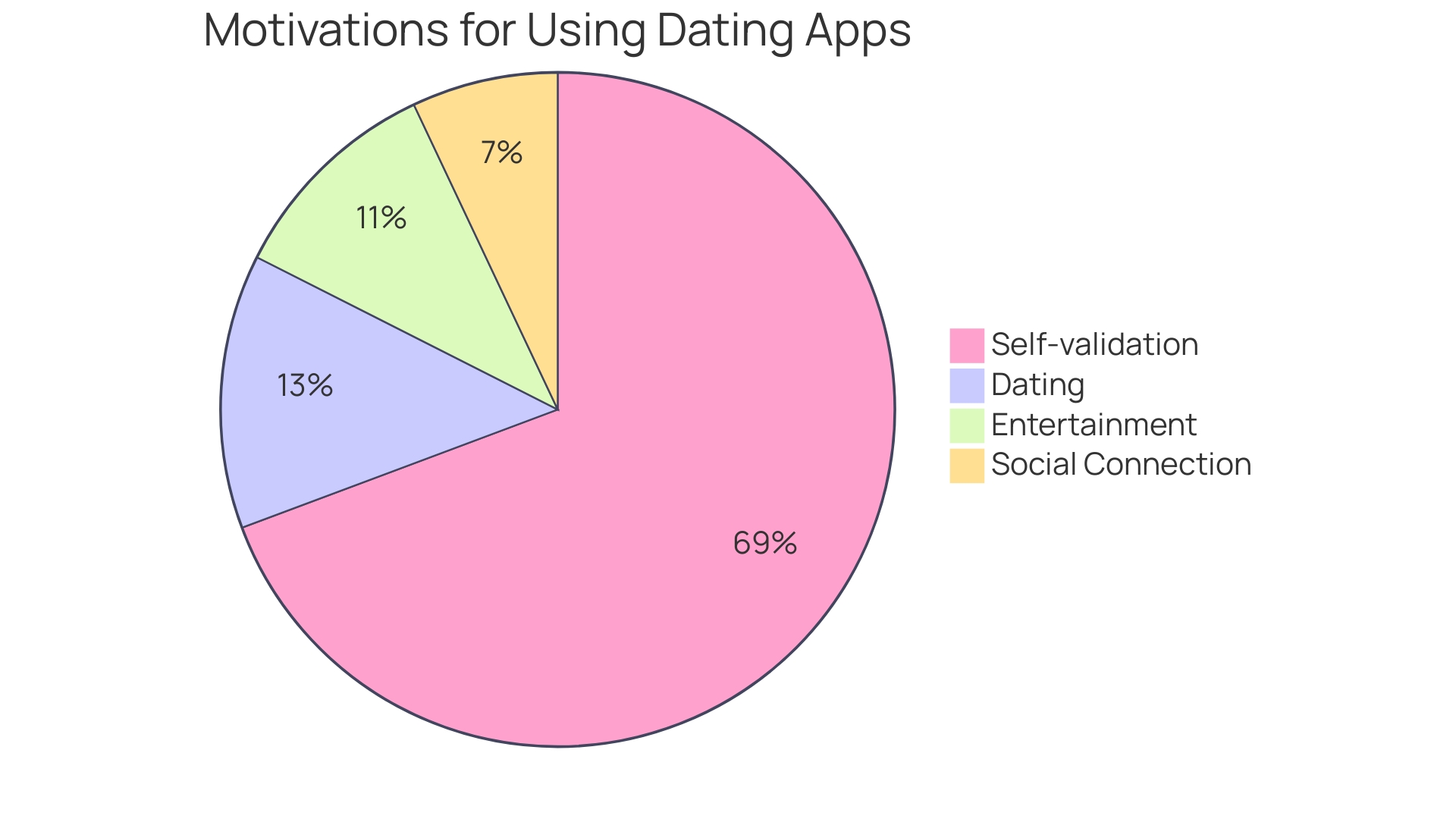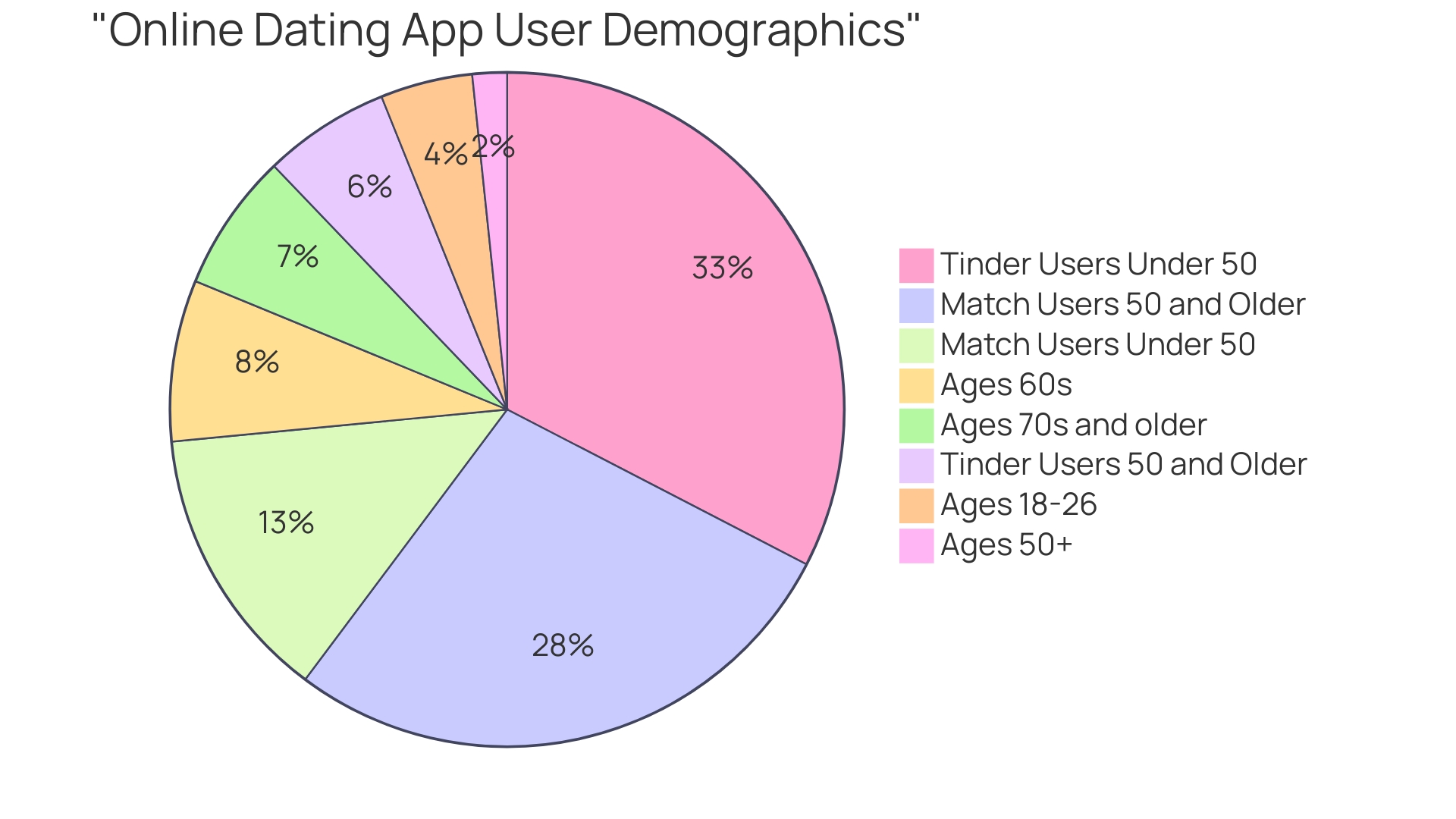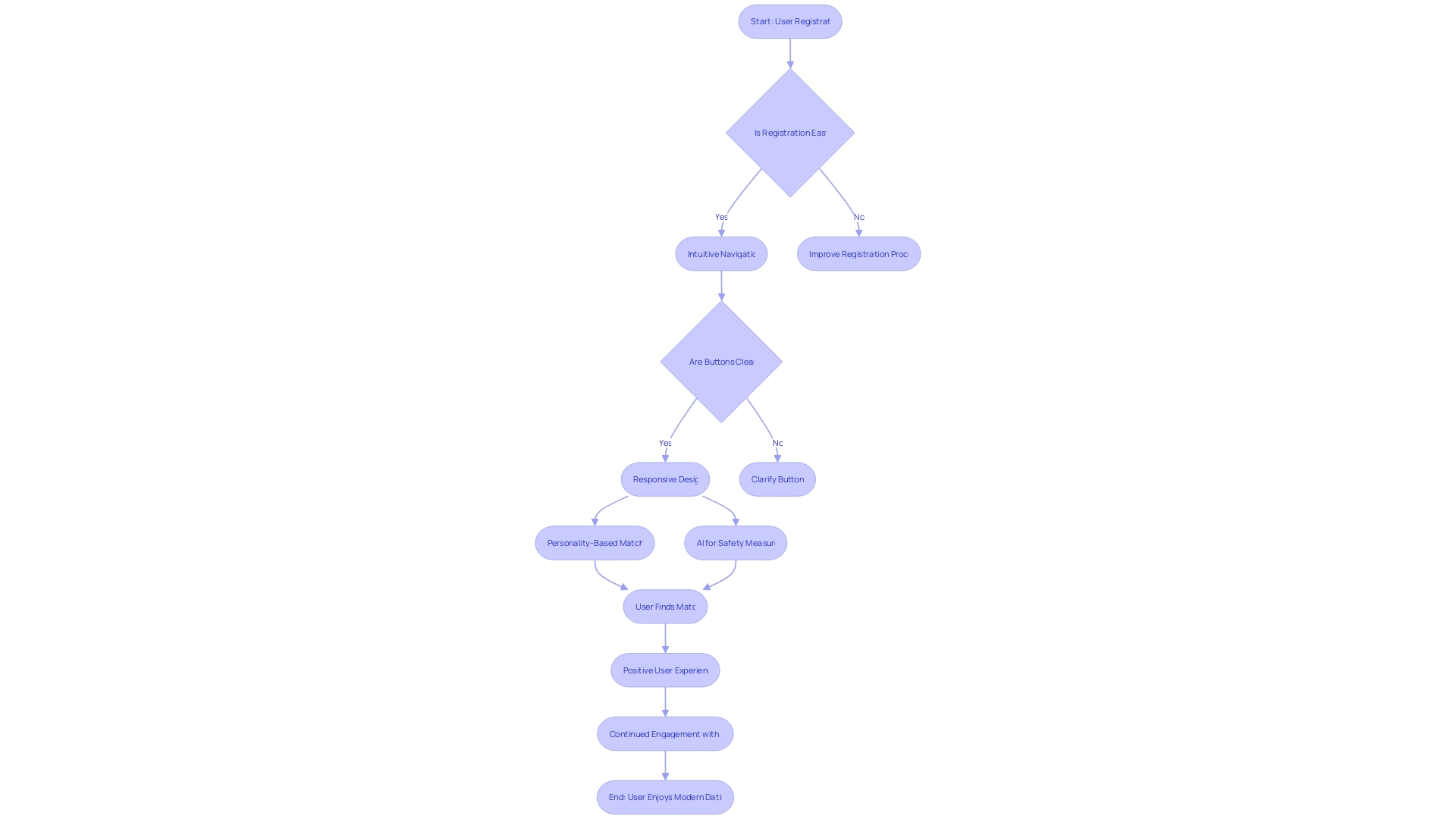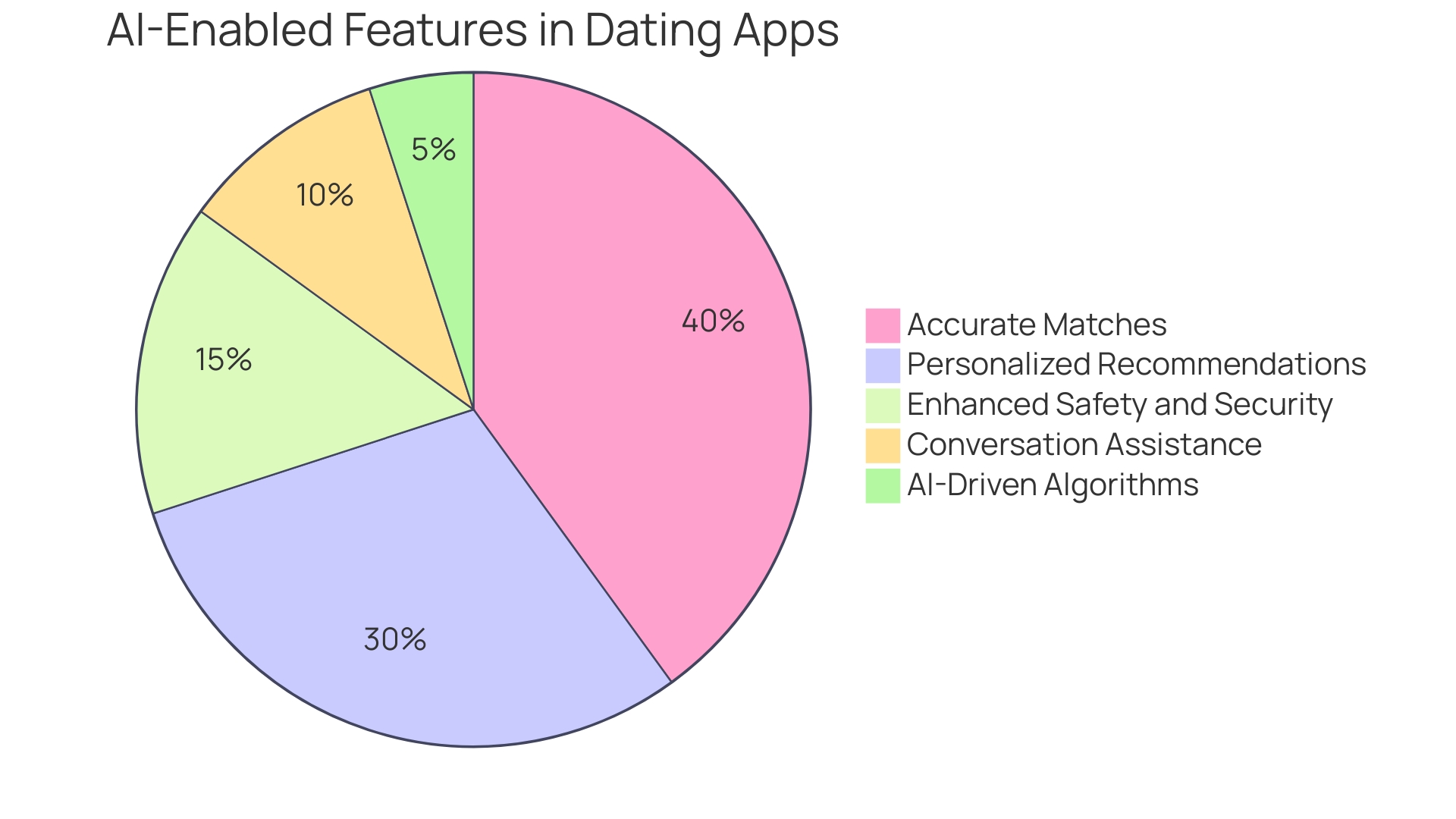Introduction
The quest for meaningful connections in our digital era has never been more pronounced, with personalized experiences at the forefront of user engagement. A dating app builder serves as the architect of such experiences, enabling users to find companions based on shared interests and compatibility. According to a forecast, the online dating market is set to soar to 9.2 billion USD by 2025, signifying the high stakes involved in providing a stellar customer experience.
Trust is the currency of the day, as users seek platforms where they can find genuine matches. Innovations like Doubble, which pairs friends for double dates, reflect the evolving landscape of dating apps, emphasizing safety and confidence in meeting new people. Nevertheless, the sheer volume of active online dating app users, estimated at over 380 million globally, reveals a complex ecosystem where motivations vary.
Research indicates that many users engage with dating apps for reasons beyond dating, such as entertainment, social connection, and self-validation. This article will explore the importance of personalized connections in the online dating industry, key features of successful dating apps, building a dating app with a no-code platform, designing an engaging user interface, and the role of AI in enhancing user experience. By delving into these topics, we will uncover insights and recommendations for creating an exceptional dating app that fosters genuine connections.
Understanding the Importance of Personalized Connections
The quest for meaningful connections in our digital era has never been more pronounced, with personalized experiences at the forefront of user engagement. A dating app builder serves as the architect of such experiences, enabling users to find companions based on shared interests and compatibility. According to a forecast, the online dating market is set to soar to 9.2 billion USD by 2025, signifying the high stakes involved in providing a stellar customer experience.
Trust is the currency of the day, as users seek platforms where they can find genuine matches. Innovations like Doubble, which pairs friends for double dates, reflect the evolving landscape of dating apps, emphasizing safety and confidence in meeting new people. Nevertheless, the sheer volume of active online dating app users, estimated at over 380 million globally, reveals a complex ecosystem where motivations vary.
Research indicates that many users engage with dating apps for reasons beyond dating, such as entertainment, social connection, and self-validation. This has led to a 'game of deception,' as noted by Germano Vera Cruz, a professor of psychology, where the true seekers of connection might find it harder to succeed. The online dating space thus becomes a microcosm of society, where the allure of attention and the convenience of objectifying potential partners through a simple swipe can overshadow the pursuit of real relationships.
As businesses invest in personalization to retain customers, the dating app industry must also adapt, ensuring that personalization fosters genuine connections. This is underscored by data showing that over half of consumers are more likely to repeat interactions after personalized experiences. The challenge is clear: dating apps must balance the convenience of modern technology with the human need for authentic and meaningful connections.

Key Features of a Successful Dating App
As the online dating landscape evolves, the quest for creating a successful app that captivates and retains users is becoming increasingly competitive. With a market expected to burgeon to a stunning 9.2 billion USD by 2025, and over 380 million active users worldwide, the stakes are high. Key features that push the envelope in enhancing user experiences are paramount to stand out in such a bustling space.
Innovative matching algorithms, as employed by Double, which pairs friends for group dates, address safety concerns and add a social dimension to the dating experience. This approach not only fosters a sense of security but also alleviates the pressure of one-on-one encounters, potentially transforming the way connections are made. Deep Learning algorithms are revolutionizing dating apps, enabling features like facial recognition to match users with those who resemble their preferred aesthetics, including celebrity look-alikes.
This level of personalization, backed by neural networks, helps to accurately reflect user preferences and lifestyles, reducing the chances of misrepresented identities. Privacy is equally critical in the realm of digital romance. Users must feel confident in the security measures in place to protect their personal information.
It's essential to provide clear options to opt-out of data sharing, as this transparency builds trust. As dating platforms like Tinder and Bumble evolve, adding features such as AI-driven content moderation and image blurring, the emphasis on user safety and control becomes even more pronounced. The underlying technology and ethical considerations of dating apps are not to be underestimated.
Backend developers like Konstantin Berezin emphasize the intricacies of matching algorithms which are the linchpin of any successful dating app. The challenge lies not just in creating matches but in fostering genuine connections that could potentially lead to meaningful relationships. With new players like Elon Musk hinting at the integration of dating features into broader social platforms, the future of online dating is poised to become even more integrated into our daily digital experiences.
Building a Dating App with a No-Code Platform
With over 380 million people using online dating apps globally, and a market projected to reach 9.2 billion USD by 2025, the potential for creating a unique dating app is immense. The key to success in this industry lies in offering a stellar customer experience and gaining the trust of users. A compelling example of innovation in this space is the dating app Double, which deviates from the traditional one-to-one matching system by pairing groups of friends, enhancing safety and confidence for first-time meetings.
Doubble's journey underscores the importance of choosing the right technology stack, as they transitioned from a non-relational database to a relational one to better support their data structure and scale globally. No-code platforms are revolutionizing the app development landscape, enabling entrepreneurs to bring their ideas to life without the need for extensive coding knowledge. These platforms offer a wealth of pre-built templates, customization options, and scalability to cater to a diverse array of app development needs.
The rise of no-code development is not just a trend; it's a movement towards empowering non-technical users to create and deploy applications efficiently. As the community of developers around these platforms grows, the exchange of knowledge, components, and best practices flourishes, further enhancing the capabilities of no-code solutions. With the integration of AI and automation, these platforms are set to bridge the gap between traditional coding and visual development, broadening the horizons for digital innovation across various industries.

Designing an Engaging User Interface
To thrive in the competitive realm of dating apps, a stellar user experience is paramount. This encompasses not only pleasing aesthetics but also intuitive navigation that guides users effortlessly through the app's functionalities. The ease of registration should be a priority, ensuring newcomers are not deterred by complex sign-up procedures.
Additionally, buttons must be clear and facilitate straightforward actions to maintain user engagement and reduce frustration. Responsive design is essential to accommodate the diverse range of devices used by the app's audience. Modern dating platforms have evolved significantly since the early days of Tinder and Bumble, which revolutionized relationship dynamics with their swipe-based mechanics.
Yet, as we've seen with innovative approaches like Hatched's personality-based matching and Tinder's profile tags, there is an ongoing effort to enhance personalization and improve user interactions. These advancements aim to mitigate the 'relationship consumption' culture that has emerged, where users can sometimes view potential matches more as items in a catalog rather than individuals seeking meaningful connections. Indeed, the ethical implications of such systems have sparked concern, prompting apps to adopt measures that foster a safer and more respectful environment.
For instance, Bumble empowers women to initiate conversations, while Tinder has implemented AI to flag potentially harmful messages. These features reflect a growing awareness of user well-being and the importance of creating a platform that is not only effective in making connections but also considers the psychological impact on its users. As we continue to navigate the digital dating landscape, it's clear that app design must be thoughtful, user-centric, and attuned to the nuanced needs of modern love seekers.

The Role of AI in Enhancing User Experience
Innovative AI technology is revolutionizing the dating app experience by providing more accurate matches, personalizing user recommendations, and enhancing app safety and security. The transformative potential of AI in dating apps is evident in the efforts of people like Alexander Zhadan, who leveraged the ChatGPT API to develop a bot that streamlined the matchmaking process on Tinder.
His bot initiated conversations and set up dates based on specified criteria, showcasing how AI can assist in navigating the often overwhelming dating landscape. Recent advancements also highlight the growing user dependence on AI for conversation assistance.
With apps like Rizz, which suggest responses to aid users in breaking the ice, it's clear that AI is becoming an indispensable tool for those seeking love online. A Kaspersky and Inner Circle survey revealed that over half of single men are open to using chatbots to chat with more people simultaneously, and a significant portion would consider AI to enhance their profiles.
This shift towards AI-enabled dating is part of a larger trend. The online dating industry has evolved from questionnaire-based matching to sophisticated AI-driven algorithms that promise to find not just a partner, but the right partner. As dating experts suggest, when using any feature, whether AI-generated or not, it's vital to remember the human element in the pursuit of meaningful connections. With Ai's help, the search for love is becoming more intuitive, efficient, and personalized, reflecting a new era in the quest for companionship.

Creating a Compelling User Profile
Creating a captivating online dating profile is more than just filling in the blanks; it's about painting a vibrant picture of who you are. With over 380 million people worldwide engaging with dating apps, individuality is key.
Take Double, for example, a social app that deviates from traditional matchmaking by pairing groups of friends, capitalizing on the safety and confidence that comes with group dynamics. Similarly, your profile should exude confidence and authenticity.
High-quality photos that reflect your current appearance are essential—75.8% of US Tinder users are male, and they're swiping right for genuine connections. A bio that succinctly shares your interests and intentions, ideally within 15-45 words, can significantly increase your chances of a match.
Tinder's research suggests that over 45% of young singles prefer profiles that specify what they're looking for. And with Ai's growing role in the dating scene, as OkCupid's AI-written questions have shown, there's potential for technology to enhance your profile. However, remember that over 30% of Gen Z users are deterred by poor spelling and grammar, so precision is paramount. Ultimately, your profile should be an honest showcase of your unique qualities, inviting potential matches into your world.

Conclusion
In conclusion, the online dating industry is booming, driven by the desire for meaningful connections and personalized experiences. With billions of dollars at stake and millions of active users worldwide, successful dating apps must prioritize safety, confidence, and genuine matches. Key features like innovative matching algorithms, deep learning technologies, and privacy measures enhance user experiences and foster trust in the platform.
Building a dating app with a no-code platform empowers entrepreneurs to create scalable apps without extensive coding knowledge. Designing an engaging user interface is crucial for attracting users in the competitive dating app landscape. Pleasing aesthetics, intuitive navigation, and responsive design contribute to a stellar user experience.
Ethical considerations are important in creating platforms that prioritize user well-being. AI plays a significant role in enhancing the user experience of dating apps. From accurate matches to conversation assistance and profile enhancement, AI revolutionizes the search for companionship.
However, it's essential to maintain a balance between technology and the human element in pursuing meaningful connections. Creating a compelling user profile is key to attracting genuine matches. Authenticity, high-quality photos, and concise descriptions of interests increase chances of finding meaningful connections.
In summary, personalized connections are paramount in the online dating industry. By incorporating key features, building with no-code platforms, designing engaging interfaces, and leveraging AI responsibly, we can create exceptional dating apps that foster genuine connections. Trust and authenticity remain at the forefront of building platforms that bring people together in our digital era.
Create a user interface that stands out and attracts users to your dating app!





